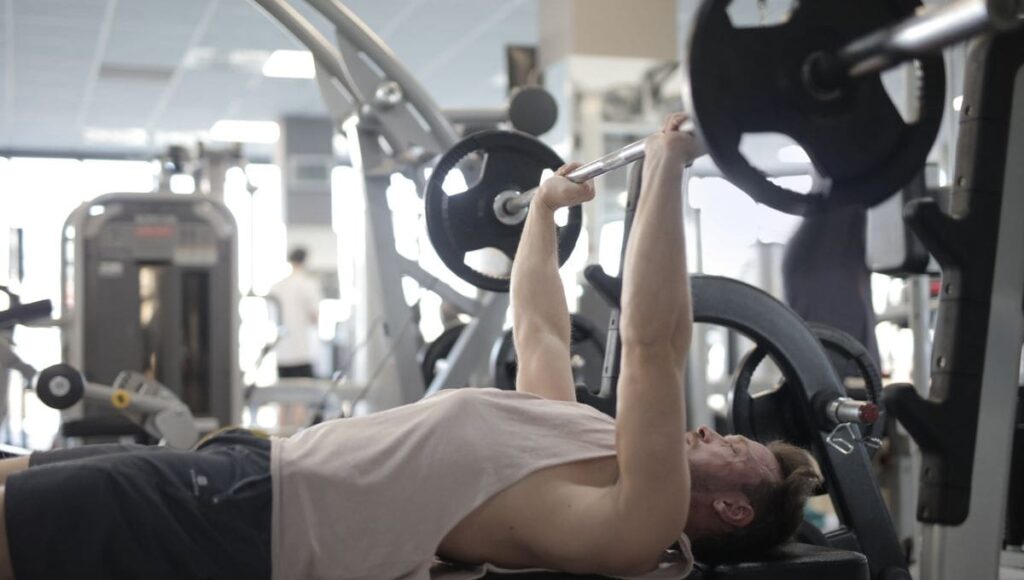Table of Contents
We’re all stressed, overworked and over-trained. After months of home HIIT and incessant running, many of us have injuries and a general boredom with fitness. To get reenergised, you’ve got to switch up your fitness regime and there’s no better workout to pick up than barre.
Barre is the full-body, low-impact workout that’s designed to strengthen and lengthen through minute movements. It’s simple but brutal: those tiny lifts and tweaks target muscles that all those lockdown miles never touched.
That’s what I thought, the first time I sidled up to a class with a running friend. Both of us were long-time gymmers and we decided to try a barre session out before work as a kind of ‘soothing’ way to start the day. Within a matter of minutes, I had to take off my vest because the sweat was pouring down my chest and the DOMS the next day were like I’d spent the previous morning pushing a static bus down the road.
Barre for muscular endurance and low injury risk
Barre is all about low weights, high reps. Often, we talk about the power of lifting heavy – lifting as much as we can for only a handful of reps. Barre takes the opposite approach, limiting the injury risk and making movements more accessible. There’s plenty of evidence out there on the benefits of that kind of training.
We tend to think that in order to build muscle, you’ve got to use heavy weights… but that’s just not true. A study published in the Journal of Strength Conditioning Research found that lifting heavy for fewer reps and lifting lighter for higher reps both result in muscular hypertrophy (the process of building stronger muscle fibres).
Those high reps are designed to boost your muscular endurance rather than promote raw power. We need good muscular endurance and stamina if we want to, say, go for a run or on walking catch-ups with mates. Endurance also lowers your risk of things like diabetes and heart disease.
While there have been no barre-specific studies published in a peer-reviewed journal yet, we know that time under tension is an important factor in activating muscle motor units. The longer a muscle stays under tension, the more chance it has to increase in strength and growth. By getting us to work with high reps in a barre class, we end up working with increased time under tension, often to the point of fatigue (which is a sign that all of the available muscle motor units have been activated).
Targeting the pelvic floor muscles as well as balance and flexibility
Barre, in particular, targets muscles that are often neglected in higher intensity workouts, like the pelvic floor. Often, we forget about that area until we have a baby or get older but we want to work on pelvic strength when we’re young so that we can maintain good pelvic health throughout our lives. The pelvic muscles support the bladder, bowel and uterus – all vital areas. Allow them to get weak and you could experience painful sex, incontinence and prolapse.
Internal and external strength aside, barre is all about balance, coordination and flexibility. Blok barre trainer Rachel Lopez encourages us to think of barre like this: “We use yoga as a form of therapy for the mind and soul – why not use barre as a therapy for your muscle groups?”
Barre for injury rehab and as an introduction to strength training
Lopez says that the way many of us think about barre is wrong: “The only difference between barre and any other strength class is how it’s programmed and the equipment we use. Barre has higher reps, with less weight but fundamentally the movements are the same – squats, lunges and presses.”
That means that barre is perfect if you’re transitioning into strength training, for example, or looking to rehab after an injury or big sporting event. Perhaps your main goal is building serious core and glute strength. In other words, barre’s a broad church when it comes to goals and gains. “It’s good to do movements quicker, it’s good to lighten the load; pairing the two work really well,” Lopez continues. “Your body can only benefit from the cross discipline way of training.”
“Even though it is low impact, barre is incredibly challenging,” Strong Women Training Club trainer Emma Obayuvana previously told Stylist.
““You’re doing so many reps of the movements and holding and pulsing for a really long time that it becomes really taxing on the muscles. If you have any joint issues or don’t want to put too much pressure through your joints, and if you need a quiet workout because of your neighbours, barre is great.”
Join Strong Women for a series of exclusive barre classes at Barrecore
But if you’re sick of working out at home and having to be mindful of your neighbours then listen up: the Strong Women Training Club is teaming up with legendary studio Barrecore to bring you a series of exclusive barre classes.
We know that not everyone wants to spend their Saturday mornings doing burpees and deadlifts but that strength is important. That’s why Barrecore’s head trainer Emily King will be running lunchtime classes at the brand’s London studios from next month, exclusively for Training Club members. Meet other Strong Women, get out of the house and get stronger with strength-focused barre classes throughout the autumn.
https://www.stylist.co.uk/fitness-health/workouts/barre-for-beginners-full-body-workout/568745




:max_bytes(150000):strip_icc()/12-3-20-workout-GettyImages-1172178488-9ebe212a943a411ca8428974fb08aa9a.jpg)